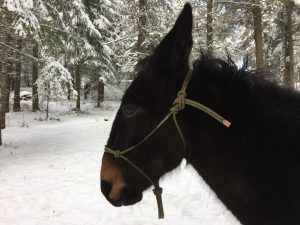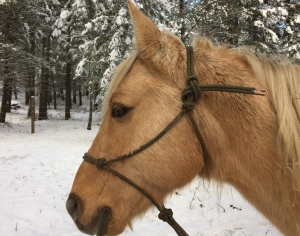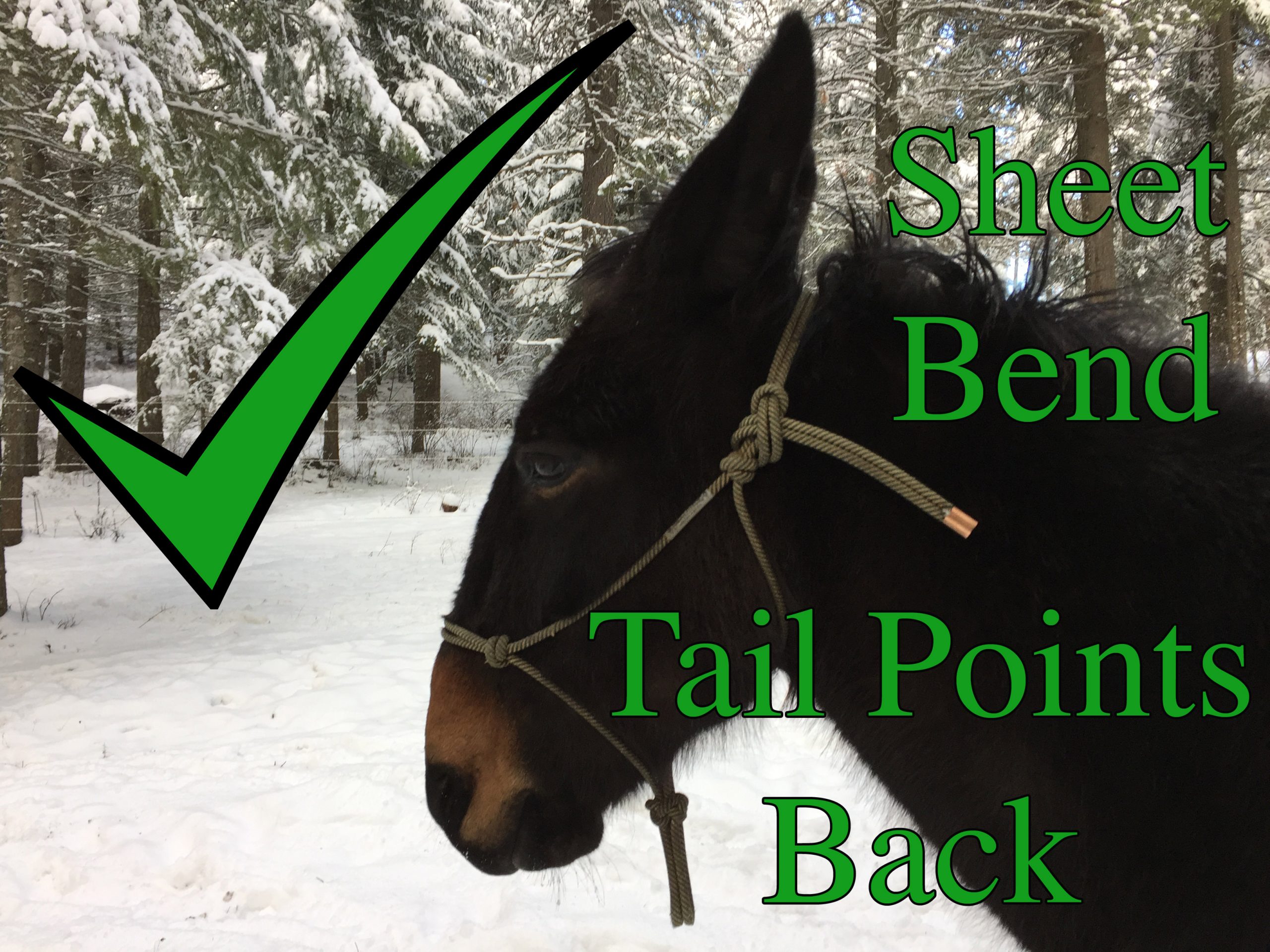 The Rope Halter
The Rope Halter
A single length of thin rope that is, quite frankly, uncomfortable when pulled upon. That uncomfortableness can help your horse or mule to teach himself to stay out of mischief. Without miles of stitching to unravel and acres of buckles to break, the simplicity of the rope halter can be a blessing. Of course, you do have to learn how to properly tie the halter. I see far too often rope halters used and tied incorrectly.
 Tied wrong a rope halter will fail, your animal will get loose, and bad things will happen. By investing a little bit of time, I think you’ll find that tying a rope halter this way is far quicker and simpler than futzing with a buckle.
Tied wrong a rope halter will fail, your animal will get loose, and bad things will happen. By investing a little bit of time, I think you’ll find that tying a rope halter this way is far quicker and simpler than futzing with a buckle.
 How to Properly Tie a Rope Halter in 5 Easy Steps:
How to Properly Tie a Rope Halter in 5 Easy Steps:
- Stand on the near side (left side) of your horse. Reach over the neck and grab the poll strap with your right hand.
- Slide the noseband over the horse’s nose and the throat knot upwards below the jaw.
- Take the end of the poll strap pointing towards you and run it through the tie loop.
- Put your thumb on the top of the loop.
- Run the end of the poll strap behind the loop and then tuck through the space between the loop and the strap. For the more technically inclined what you just did was create a sheet bend knot!
- Make sure that the pointy end is pointing towards your animal’s butt and away from his eye!
Here’s a quick video to further help!
Rope halters can come in different diameters. The thinner the rope, the more uncomfortable the halter when pressure is applied, compared to thicker diameter rope halters. Some rope halters have knots on either side of the nose, while others have a band of thicker rope. As a training aid, rope halters allow horse owners to use the least amount of pressure and the ability to release that pressure more quickly than a flat halter.
In an emergency, rope halters can be cut away more quickly than flat nylon or leather halters. I always keep a spare halter and lead rope around the barn, in the truck, and while camping. In a pinch, a length of baling string can serve the purpose too.
The Break Away Argument
I am not a fan of breakaways on halters or any of my equine equipment for that matter. For my purposes and the areas where I go the consequences of getting loose can be life threatening for not only for my animal but also for me. A loose horse may eventually wander back to camp on his own. Maybe. Or you could spend days, or weeks, searching for him without any luck. These situations do happen and they rarely end well. Neither do I believe in the use of breakaways closer to civilization. Once free not only has the animal learned how easy it is to escape, it has become a danger to other animals and to people. And a horse is no match for a car.
You might ask what about if the beast gets its halter caught while in the pasture? Very bad things. Which is why an unsupervised animal should never wear any type of halter.


